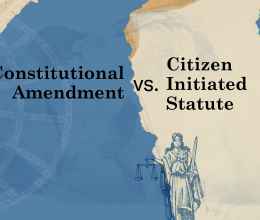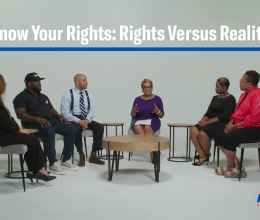Ohioans behind bars are especially vulnerable to contracting COVID-19. The ACLU of Ohio sent three sets of records requests to learn more about what Ohio officials are - and are not - doing to prevent and mitigate the spread of the highly contagious and often deadly virus.
The handling of the COVID-19 crisis in our prison system by Governor Mike DeWine, the Ohio Department of Rehabilitations and Corrections, and the Ohio Department of Youth Services is an unmitigated disaster. The meager response by the DeWine administration to stop the virus’ spread throughout our prisons stands in stark contrast to the early, decisive actions taken by DeWine to protect the general population at the onset of this crisis.
Because of this inaction, Ohio prisons in Marion and Pickaway counties are now two of the nation’s largest infection hotspots. What’s worse, these massive outbreaks in our prison system were avoidable. The ACLU of Ohio sent Gov. DeWine a letter on March 10, a full six days before the Governor issued his first stay-at-home order, highlighting the urgency of keeping COVID-19 out of our prisons, and evidence based approaches to achieving that goal. Sadly, the administration didn’t share our foresight of the situation.
Continued indecision followed, and no plans for protecting and reducing Ohio’s incarcerated population were announced until April 3. Meanwhile, we continued to fight for the health and safety of Ohio’s prisoners. The ACLU of Ohio, along with other criminal justice advocates, sent another letter to the administration specifically identifying the legal mechanisms at their disposal to reduce Ohio’s bursting prisons and to release and transfer vulnerable people to safer environments.
Finally, after nearly a month of Ohioans staying-at-home to combat this lethal virus, Governor DeWine took to the podium at his daily COVID-19 press briefings and laid out his plan for protecting our prison population. His plan – a recommendation that stakeholders consider the release of two hundred and five prisoners – out of a prison population of forty nine thousand! Not good enough, simple as that. In response, the ACLU took to the airwaves with advertisements calling on elected leaders to get serious about releasing the elderly and immunocompromised from our jails and prisons – populations we know to be more susceptible to infection and death.
Still unsatisfied with the state’s response to this crisis, the ACLU of Ohio drafted three sets of public records requests. One for Governor DeWine, one for Annette Chambers-Smith, Director of the Department of Rehabilitation and Corrections, and one for Ryan Gies, Director of the Department of Youth Services to better understand how our leaders are responding to COVID-19 spreading throughout our prisons. The people of Ohio have a right to know about any plans to reduce the prison population that were not accepted. What did our leaders know and when? How were plans determined to be put in place in DRC and DYS facilities? And how much sooner did our leaders know about COVID-19 in our prisons, jails and youth detention centers before the public? Ohioans have a right to know all this and more. Government transparency is always good public policy, but it is absolutely essential during times of crisis.
We are pulling back the curtain and shedding light on how the state ignored its legal and ethical responsibility to protect forty nine thousand Ohioans, over whom the state has direct custody. The ACLU of Ohio is unwavering in our commitment to hold our government officials accountable and make sure they operate transparently. The urgency of this mission is even more profound when doing so on behalf of the often maligned Ohioans behind bars.
Records Requests to Governor DeWine.








